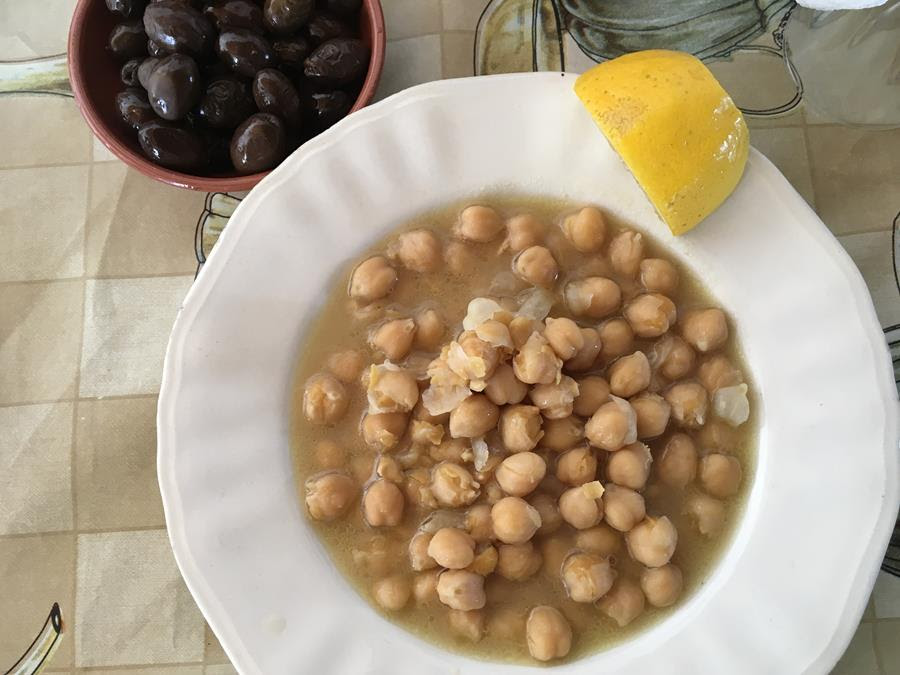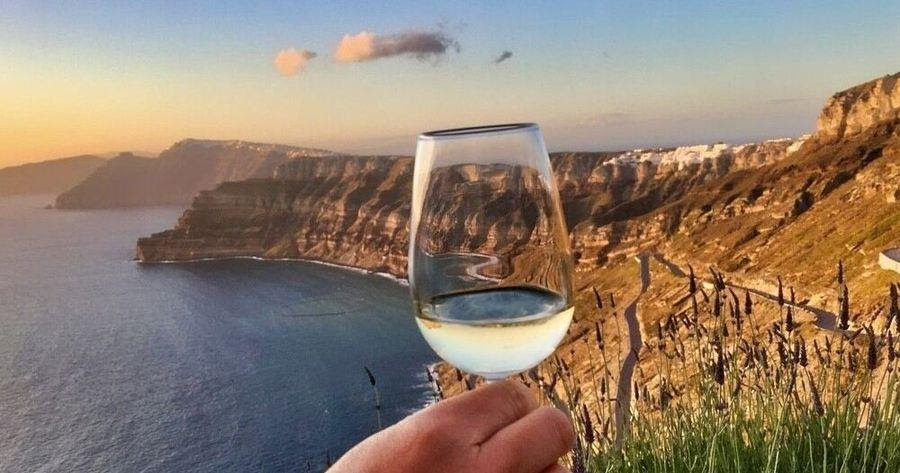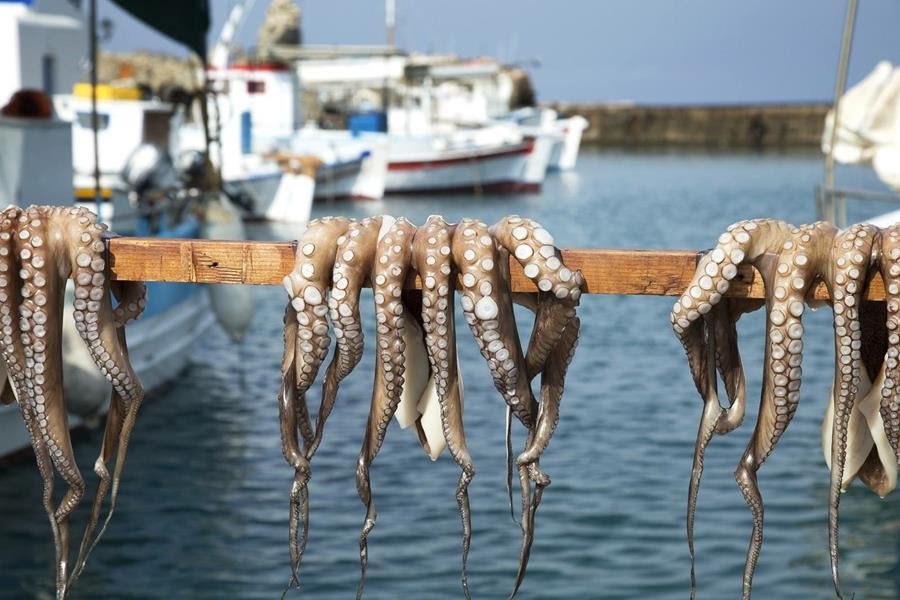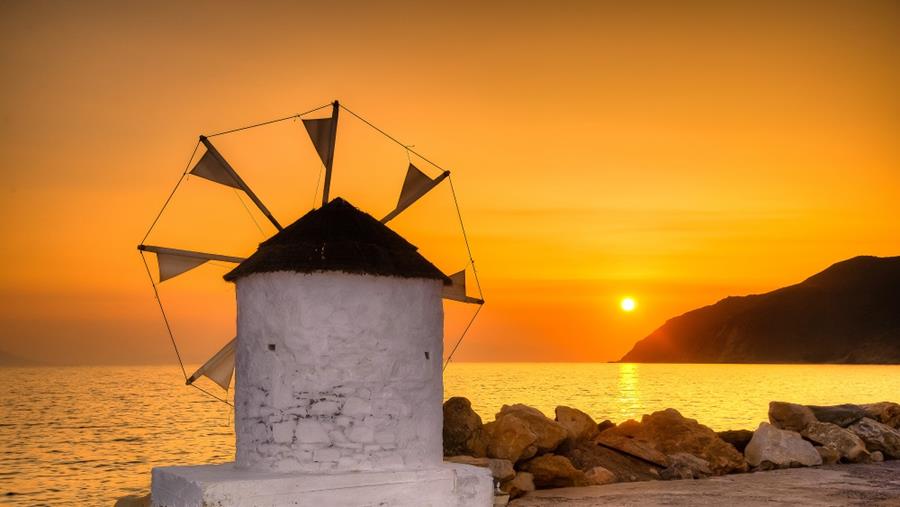An Overview of the Aegean Islands
Numerous large and small islands emerge from the clear blue waters throughout the Aegean Sea. These are the mountain peaks of Aegeis, the name given to a now-submerged landmass. The major North Aegean islands are Lesvos, famous for its ouzo, Chios, known for its cultivation of mastiha, Samos, with its sweet muscat wines, Lemnos, with its 12th century Myrina castle, Ikaria, which took its name from the famous myth of Daedalus and Icarus, Thasos, with its famous white marble, and Samothrace, where was found the famous Winged Victory of Samothrace, on display at the Louvre museum. In this complex, eight other small islands are also found.
The largest of the Dodecanese islands in the southeastern Aegean is Rhodes, with its famous Palace of the Grand Master, built in the 14th century. Other well-known islands are Kos, the homeland of Hippocrates, Karpathos, with its uniquely beautiful hiking paths, Kalymnos, the island of sponge divers, Symi, with its unique architecture, Patmos, with its Monastery of Saint John the Theologian, Kasos a peaceful gem, famous for its “Panigiria” (religious festivals) and 22 smaller islands.
The Cyclades lies in the heart of the Aegean, Greece’s best-known island complex. It consists of 21 inhabited and 7 uninhabited islands and many small islets. Santorini and Mykonos are internationally-known tourist destinations, followed by Naxos, Andros, Paros, Tinos, Milos, Kea, Amorgos, Ios, Sikinos, Kythnos, Syros, Serifos, Sifnos, Delos (an exclusively archaeological site), Folegandros, and many other smaller islands. The island’s arid landscape, gorgeous beaches, and brilliantly white Cycladic houses and churches are characteristic.
The Argo-Saronic Gulf has 10 islands, the best-known being Salamis, Aegina, Poros, Hydra, and Spetses, which are only a short distance from the port of Piraeus. They are a favourite destination for Athenians all year round.
The Northern Sporades consist of Skyros, Skopelos, Alonnisos, Skiathos, and several small islands. The waters of the Sporades are the breeding ground for the largest population of Mediterranean seals, which are endemic to the region.
To read more about the gastronomy of the Aegean Islands press here
Cooking Classes with Locals

Cooking classes in the Aegean Islands offer a unique experience of learning how to cook local Greek recipes by a local cook. Aegean cuisine is steeped in history and tradition, influenced by various civilizations over centuries. Cooking classes often delve into this rich culinary heritage, teaching not just recipes but the stories and cultural significance behind them.
From 77 € / per person
Wine Tastings and winery visits

Visiting a winery on the Aegean Islands is an experience that offers a delightful blend of history, culture, and flavour. Aegean archipelago, with its rich wine tradition dating back to ancient times, boasts a diverse range of indigenous grape varieties, picturesque vineyards and unique terroirs.
From 11 € / per person
Taste original Aegean products

Take the opportunity to taste a plethora of Aegean delicacies while visiting producers of the Aegean Islands or participating in gastronomic Activities a unique opportunity to explore the country’s beautiful islands, soaking in the sights, sounds, and aromas along the way.
Overall, food tours in the Aegean islands offer a perfect blend of culinary delights, cultural exploration, and memorable experiences you won’t want to miss.
From 69 € / per person
Aegean Islands Outdoor Activities

Participate in outdoor activities, take breaks to enjoy delicious meals, or visit local producers to witness their daily lives and taste their succulent products.
From: 40 € / per person
Use our transfer Services

Renting a car not only gives you the freedom to visit producers, taste local products, and experience the region’s culinary scene at your own pace, but also allows you to explore the numerous archaeological sites, visit charming villages, venture into the high mountains, and enjoy the stunning beaches that the Peloponnese has to offer.
It’s a fantastic way to indulge in the gastronomy of the region while soaking in its rich history, natural beauty, and cultural heritage.
To see proposals from other regions press here to visit the Gastronomic Traveller blog section




